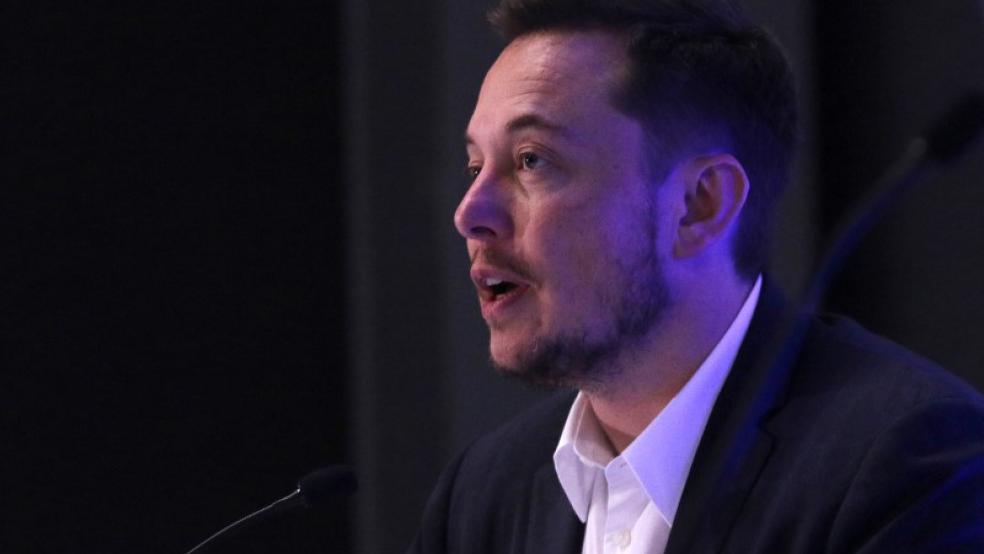Tesla and its wunderkind founder and CEO, Elon Musk, unveiled a new gizmo this week: solar panel tiles that double as roof shingles.
Aesthetically, they're undeniably cool. The solar tiles are made from textured glass to mimic classic designs — standard black asphalt shingles, Tuscan shingles, slate tiles, and Spanish-style curved clay shingles. "You'll want to call your neighbors over and say 'check out the sweet roof,'" Musk promised.
Related: Elon Musk Outlines His Master Plan for Tesla, but Can It Be Done?
This new offering would complete his trifecta: Solar power-generating tiles on every roof, a battery in every home, and an electric car in every garage. Modern clean-energy living, independent of the grid.
Unfortunately, while the presentation was stunning, it lacked practical considerations — like, well, cost.
When pressed about his system's price tag, Musk was troublingly vague. "[He] said that someone who buys a Tesla roof will save money compared with someone who buys a comparable traditional roof plus electricity from the grid," Bloomberg reports, calling Musk's math "squishy" since new roofs range between $7,000 and $70,000.
This is a problem. For Tesla's solar roofs to make a difference in the solar market, they can't rely on looks alone.
Other companies like Dow have actually attempted solar panels that double as rooftop shingles before and wound up crashing against the hard realities of cost and efficiency and market competition. (Though some others have managed to eke out niche markets.) "It's been a tough field to enter into with essentially no success stories," David Fenning, a University of California-San Diego professor and solar researcher, told CNN Money. "The challenge with solar comes down to cost. You want to be squeezing out every 0.1 percent in efficiency."
Related: Buy a Car, Get a Network: Tesla's Plan to Take on Uber
So what would it take for Tesla's solar roofs to attract a critical mass of consumers? Their cost is probably going to have to be in the ballpark of, and hopefully lower than, the average electricity bill. That's the gold standard for solar panels.
What does that mean, exactly? Over three decades — about the life expectancy of Tesla's tiles — that comes to around $39,000 for an average household.
There's a hiccup, though. We already know that Tesla's shingles have an added cost: A battery to store the electricity they produce for when the sun isn't shining. The Powerwall 2 battery that Tesla unveiled along with its solar roof system will run you $5,500. Unfortunately, you'll probably need more than one. The Powerwall 2 is a 14 kilowatt-hour (kWh) battery, but a standard home probably needs at least a 30 kWh battery to cover one day of electricity use — and probably 60 kWh just for comfort. That comes to around $11,700 for the former, and $23,400 for the latter.
So the price of Tesla's tiles really should be at least below $27,300 to lure in consumers.
Now, as Musk pointed out implicitly, this might be a different story for someone who's building a new home or needs to replace their roof anyway. Then you can add between $7,000 and, um, $70,000 to that base — a lot more wriggle room. So if I had to guess, Tesla's system is going to be limited mostly to the new construction market or people looking to replace their roofs anyway.
That's nothing to sneeze at! But to build up enough critical mass in the market to really shift how our entire society generates electricity — to get the great bulk of all those millions upon millions of individual economic decisions to turn in green energy's favor — rooftop solar can't just win that competition by inches; it needs to win it by a lot more.
Right now, Tesla is trusting the aesthetics of their new product, its durability, and the convenience of the ecosystem they're offering — rooftop solar, home battery, electric car, all off the grid — to put them over the hump. Which is probably a package deal that will only work in high-end consumer markets.
The good news for Tesla is that, by all accounts, battery prices are dropping fast. In 10 years we should be at or near $150 per kWh, at which point a 30 kWh or even 60 kWh plus Tesla's solar tiles should be a competitive purchase for any home, in need of a new roof or not. In fact, Tesla thinks it can get to that target even faster, once their "gigafactory" is up and running and producing batteries at mass scale.
And of course, if by some miracle Tesla can get the costs of its system under that of standard roof solar, well then we might be on to something.
So Tesla's new creation might yet be a game changer. But first we need to see some hard numbers.
This article originally appeared on The Week. Read more from The Week:
There's a small, irresponsible part of me that would like to see Trump win
I already miss the Chicago Cubs' curse
Would Republicans actually try to impeach Hillary Clinton?




